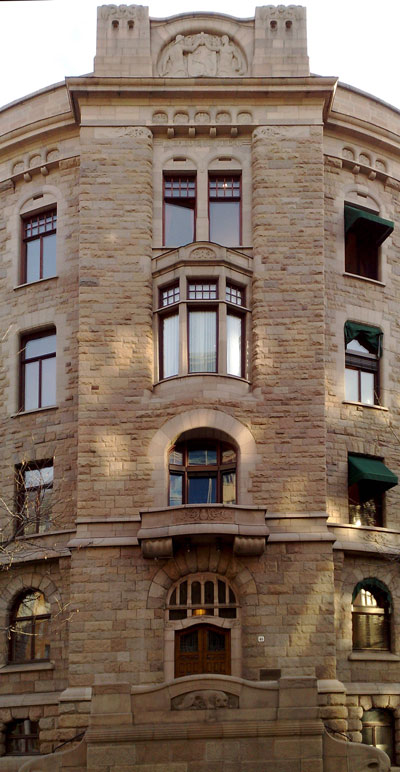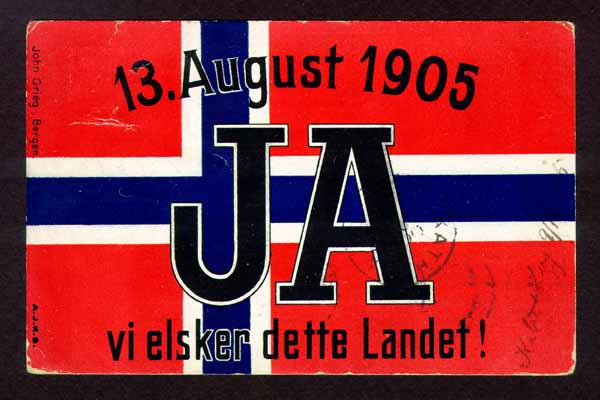|
Michelsen's Cabinet
The Michelsen's Cabinet was a Norwegian cabinet, formed by a coalition of the Liberal Party, the Conservative Party, the Moderate Liberal Party and the Coalition Party. It governed Norway between 11 March 1905 and 23 October 1907. It entered office as part of the build-up for the dissolution of the union between Norway and Sweden in 1905. It had the following composition: Cabinet members Other The State Secretary title is not to be confused with the modern title State Secretary. The old title State Secretary, used between 1814 and 1925, is now known as Secretary to the Government (''Regjeringsråd''). - Government.no [...More Info...] [...Related Items...] OR: [Wikipedia] [Google] [Baidu] |
Norway
Norway, officially the Kingdom of Norway, is a Nordic country in Northern Europe, the mainland territory of which comprises the western and northernmost portion of the Scandinavian Peninsula. The remote Arctic island of Jan Mayen and the archipelago of Svalbard also form part of Norway. Bouvet Island, located in the Subantarctic, is a dependency of Norway; it also lays claims to the Antarctic territories of Peter I Island and Queen Maud Land. The capital and largest city in Norway is Oslo. Norway has a total area of and had a population of 5,425,270 in January 2022. The country shares a long eastern border with Sweden at a length of . It is bordered by Finland and Russia to the northeast and the Skagerrak strait to the south, on the other side of which are Denmark and the United Kingdom. Norway has an extensive coastline, facing the North Atlantic Ocean and the Barents Sea. The maritime influence dominates Norway's climate, with mild lowland temperatures on the sea co ... [...More Info...] [...Related Items...] OR: [Wikipedia] [Google] [Baidu] |
Hagerup's Second Cabinet
The Hagerup's Second Cabinet governed Norway between 22 October 1903 and 11 March 1905. It fell as the cabinet ministers collectively resigned on 28 February and 1 March 1905, as part of the build-up for the dissolution of the union between Norway and Sweden in 1905. Christian Michelsen withdrew his application, and could form the cabinet Michelsen. It had the following composition: Cabinet members Unless otherwise noted, the period was 22 October 1903 - 11 March 1905 State Secretary Not to be confused with the modern title State Secretary. The old title State Secretary, used between 1814 and 1925, is now known as Secretary to the Government (''Regjeringsråd''). [...More Info...] [...Related Items...] OR: [Wikipedia] [Google] [Baidu] |
Wilhelm Olssøn
Christian Wilhelm Engel Bredal Olssøn (5 April 1844 – 3 November 1915) was a Norwegian military officer and politician. Olssøn was born in Horten in Vestfold, Norway. He was the son of Edvard Olssøn (1820–1867) and Leonore Rebecca Bredal (1820–1910). He received a military education at the Norwegian Military Academy The Norwegian Military Academy (), in Oslo, educates officers of the Norwegian Army and serves as the King's Royal Guard. The academy was established in 1750, and is the oldest institution for higher education in Norway. History The Commander- ... (1866) and Norwegian Military College (1870). He received additional education at the Royal Institute of Technology in Stockholm (1872–1874). He was appointed major general in 1896. In 1898, he was commander at Oscarsborg, 1899 inspector general for coastal artillery. In 1907, he became lieutenant-general. He retired from military service in 1912 as commanding general. He served as Minister of Defen ... [...More Info...] [...Related Items...] OR: [Wikipedia] [Google] [Baidu] |
Ministry Of Defence (Norway)
The Royal Norwegian Ministry of Defence ( no, Det kgl. Forsvarsdepartement) is a Norwegian government ministry in charge of the formation and implementation of national security and defence policy, and for the overall management and control of the activities of subordinate agencies. The ministry is located at Glacisgata 1, Oslo, inside Akershus festning. The ministry is headed by the politically appointed Minister of Defence, currently Bjørn Arild Gram. The ministry controls a large group of defence-related agencies, not to be related with Ministry of Foreign Affairs that controls all intelligence-related agencies in the country. Core tasks * Strategic analysis, research and development (R&D) * The development of long-term policy including future strategic concepts and doctrines * Perspective and structural planning * Planning, budgeting and implementation in the medium and short term * Overall management of agencies' activities during the budget year * Operational policy, p ... [...More Info...] [...Related Items...] OR: [Wikipedia] [Google] [Baidu] |
Minister Of Auditing
The Norwegian Minister of Auditing was the head of the Norwegian Ministry of Auditing. The position existed from 1822 to 1918. List of Norwegian Ministers of Auditing ReferencesMinistry of Auditing. Councillor of State 1822 - 1918 {{Ministers of Norway Auditing 1822 establishments in Norway ... [...More Info...] [...Related Items...] OR: [Wikipedia] [Google] [Baidu] |
Abraham Berge
Abraham Theodor Berge (20 August 1851 – 10 July 1936) was the 15th prime minister of Norway from 1923 to 1924. He was a teacher and civil servant who represented the Liberal Party, the social liberal party, and later Free-minded Liberal Party, a right-of-centre party. Biography Berge was born at Lyngdal in Lister og Mandals amt (present-day Vest-Agder), Norway . He was the son of Johan Tobias Johnsen Berge (1813–1883) and Helene Andreasdatter Kvalsvig. He attended the teacher's course offered by Reinert Rødland in Lyngdal. In 1867, Berge became teacher at the Nordbygda skole in Vanse. He also served as sheriff in Vanse from 1904 to 1908. Berge was appointed County Governor in Vestfold in 1908, a position he held until 1924. Berge started his political career in Lista in the present-day municipality of Farsund, where he was in 1882 elected mayor. From here he went on to the Norwegian Parliament in 1891. He served, in different periods, as both Minister of Culture and Church ... [...More Info...] [...Related Items...] OR: [Wikipedia] [Google] [Baidu] |
Ministry Of Finance (Norway)
The Royal Norwegian Ministry of Finance ( Norwegian: Finansdepartementet) is a Norwegian ministry established in 1814. The ministry is responsible for state finance, including the state budget, taxation and economic policy in Norway. It is led by Trygve Slagsvold Vedum ( Centre Party). The department must report to the Parliament of Norway. Organization The ministry is divided into the following sections: * Political staff * Information Unit * Asset Management Department * Budget Department * Financial Markets Department * Tax Law Department * Tax Policy Department * Economic Policy Department * Department of Administrative Affairs Subsidiaries The following government agencies are subordinate to the ministry: * Pension Fund Global * National Insurance Scheme Fund * Bank of Norway * Norwegian Customs and Excise Authorities * Norwegian Financial Supervisory Authority * Norwegian Government Agency for Financial Management * Norwegian National Collection Agency * Norwegian Ta ... [...More Info...] [...Related Items...] OR: [Wikipedia] [Google] [Baidu] |
Ministry Of Justice And Public Security (Norway)
The Royal Ministry of Justice and Public Security ( no, Det kongelige justis- og beredskapsdepartement) is a Norwegian government ministry that oversees justice, the police, and domestic intelligence. The main purpose of the ministry is to provide for the maintenance and development of the basic rule of law. An overriding objective is to ensure the security of society and of individual citizens. The ministry was founded in 1818 and currently employs about 400 people in the central government department. Its subordinate agencies include the Norwegian Police Service, the Norwegian Correctional Service, the Norwegian Police Security Service, the Norwegian Prosecuting Authority, the Judiciary of Norway, and the Directorate of Immigration, and employ around 30,000 people. The Ministry of Justice of Norway oversees the administration of justice in Svalbard. History The ministry was founded in 1818 and was known as the Royal Ministry of Justice and the Police from its establishment ... [...More Info...] [...Related Items...] OR: [Wikipedia] [Google] [Baidu] |
Ministry Of Foreign Affairs (Norway)
The Royal Norwegian Ministry of Foreign Affairs ( Norwegian (Bokmål): ''Det kongelige utenriksdepartement''; Norwegian (Nynorsk): ''Det kongelege utanriksdepartement'') is the foreign ministry of the Kingdom of Norway. It was established on June 7, 1905, the same day the Parliament of Norway (Stortinget) decided to dissolve the personal union with Sweden. The ministry is headed by Minister of Foreign Affairs, currently Anniken Huitfeldt, who is a minister in the Støre cabinet that has governed since 14 October 2021. The ministry also has a Minister of International Development. This position was established by the Willoch cabinet in 1983, and existed until October 2013 when it was abolished by the Solberg's Cabinet and the foreign minister became the sole head of the ministry. The position of Minister of International Development was restored on January 17, 2018, when the Liberal party The Liberal Party is any of many political parties around the world. The meaning of '' ... [...More Info...] [...Related Items...] OR: [Wikipedia] [Google] [Baidu] |
List Of Heads Of Government Of Norway
This is a list of heads of government of Norway. In the modern era, the head of government has the title prime minister ( no, Statsminister). At various times in the past, the highest governmental title has included steward ( no, Rigsstatholder), viceroy ( no, Vicekonge) and first minister ( no, Førstestatsraad) Until 1873, the King of the personal union between Sweden and Norway governed Norway through two cabinets: one in Stockholm and another in Christiania (now Oslo). The newly created Stockholm cabinet consisted of a prime minister and two ministers, whose role was to convey the attitudes of the Christiania cabinet to the Swedish King. The cabinet in Christiania was led by a steward ( no, Rigsstatholder). For brief periods, the incumbent crown prince was appointed Viceroy of Norway by the King, in which case the viceroy became the highest authority in Christiania. Whenever the King was present in Christiania, however, he assumed the highest authority, thus putting the gove ... [...More Info...] [...Related Items...] OR: [Wikipedia] [Google] [Baidu] |
Prime Minister Of Norway
The prime minister of Norway ( no, statsminister, which directly translates to "minister of state") is the head of government and chief executive of Norway. The prime minister and Cabinet (consisting of all the most senior government department heads) are collectively accountable for their policies and actions to the monarch, to the Storting (Parliament of Norway), to their political party, and ultimately the electorate. In practice, since it is nearly impossible for a government to stay in office against the will of the Storting, the prime minister is primarily answerable to the Storting. The prime minister is almost always the leader of the majority party in the Storting, or the leader of the senior partner in the governing coalition. Norway has a constitution, which was adopted on 17 May 1814. The position of prime minister is the result of legislation. Modern prime ministers have few statutory powers, but provided they can command the support of their parliamentary party, ... [...More Info...] [...Related Items...] OR: [Wikipedia] [Google] [Baidu] |
Dissolution Of The Union Between Norway And Sweden In 1905
The dissolution of the union ( nb, unionsoppløsningen; nn, unionsoppløysinga; Landsmål: ''unionsuppløysingi''; sv, unionsupplösningen) between the kingdoms of Norway and Sweden under the House of Bernadotte, was set in motion by a resolution of the Storting on 7 June 1905. Following some months of tension and fear of an outbreak of war between the neighbouring kingdoms (then in personal union) – and a Norwegian plebiscite held on 13 August which overwhelmingly backed dissolution – negotiations between the two governments led to Sweden's recognition of Norway as an independent constitutional monarchy on 26 October 1905. On that date, King Oscar II renounced his claim to the Norwegian throne, effectively dissolving the United Kingdoms of Sweden and Norway, and this event was swiftly followed, on 18 November, by the accession to the Norwegian throne of Prince Carl of Denmark, taking the name of Haakon VII. Background Norwegian nationalistic aspirations in 1814 were ... [...More Info...] [...Related Items...] OR: [Wikipedia] [Google] [Baidu] |




